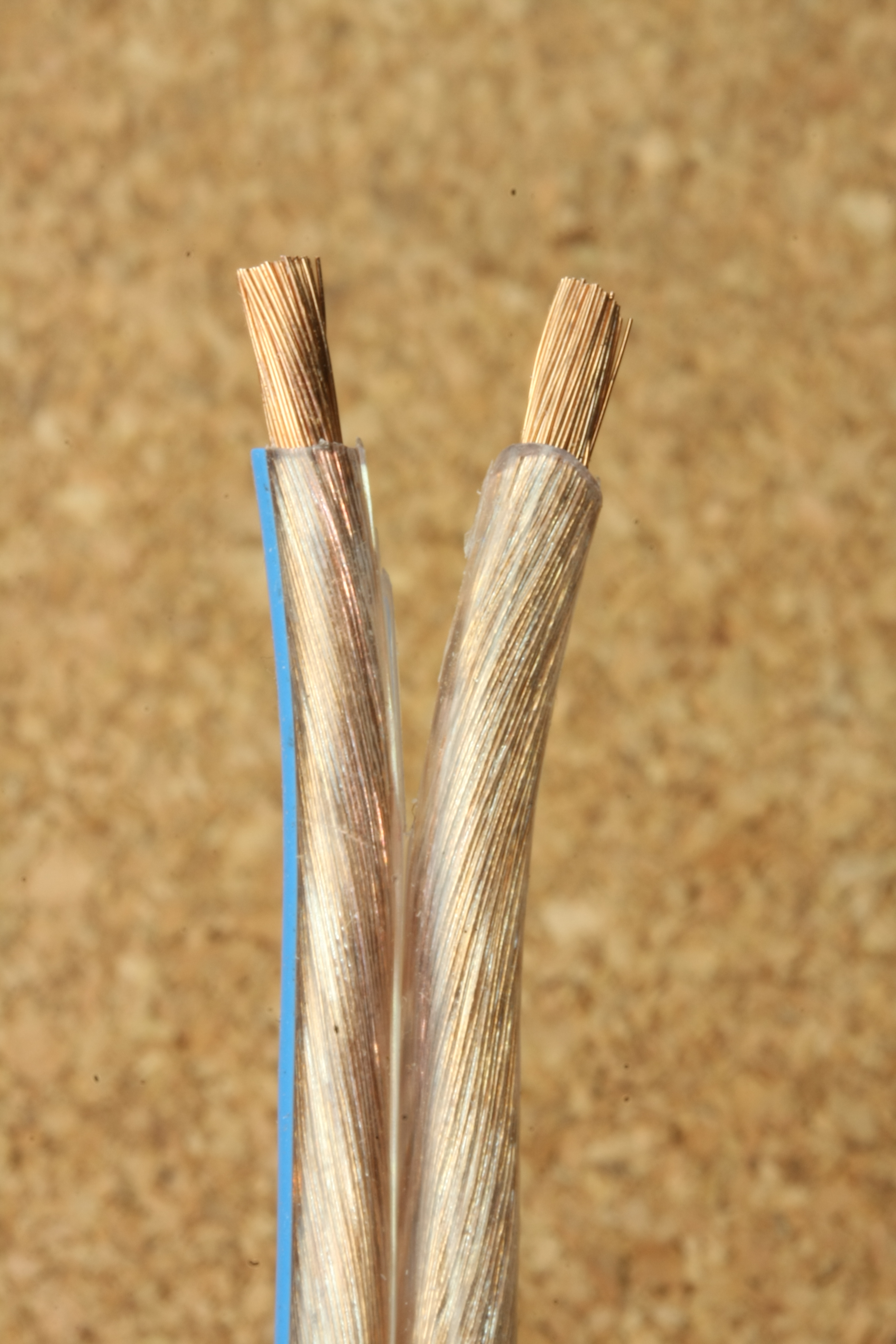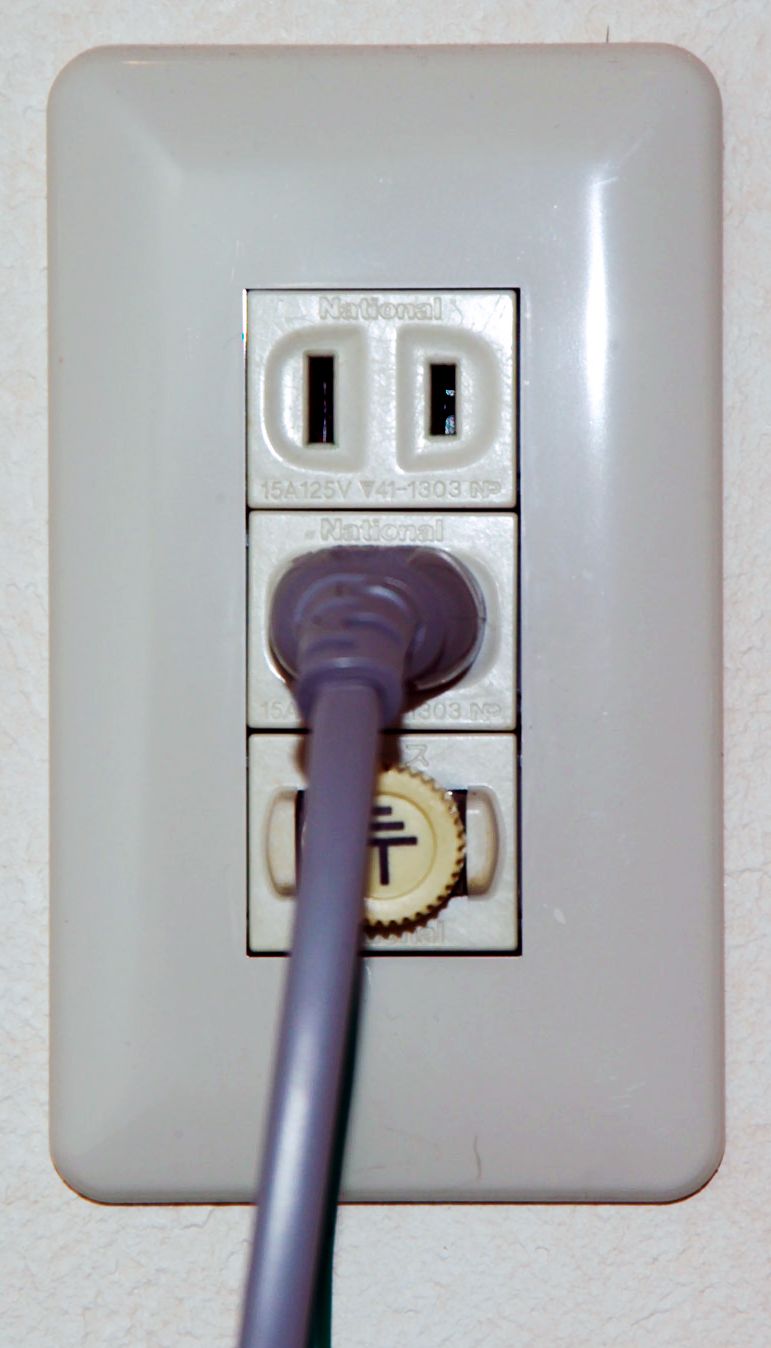|
Zip Cord
Zip-cord is a type of electrical cable with two or more conductors held together by an insulating jacket that can be easily separated simply by pulling apart. In Australia it is known as 'figure-8' cable. The zip-cord term is also used with optical fiber cables consisting of two optical fibers joined in a similar manner. The design of zip-cord makes it easy to keep conductors that carry related electrical or optical signals together and helps avoid tangling of cables. Typical uses include lamp cord and speaker wire. Conductors may be identified by a color tracer on the insulation, or by a ridge molded into the insulation of one wire, or by a colored tracer thread inside the insulation. Zip cords are intended for use on portable equipment, and the US and Canadian electrical codes do not permit their use for permanently installed wiring of line-voltage circuits. See also *Wire Overhead power cabling. The conductor consists of seven strands of steel (centre, high tensile st ... [...More Info...] [...Related Items...] OR: [Wikipedia] [Google] [Baidu] |
Electrical Cable
An electrical cable is an assembly of one or more wires running side by side or bundled, which is used to carry electric current. One or more electrical cables and their corresponding connectors may be formed into a ''cable assembly'', which is not necessarily suitable for connecting two devices but can be a partial product (e.g. to be soldered onto a printed circuit board with a connector mounted to the housing). Cable assemblies can also take the form of a cable tree or cable harness, used to connect many terminals together. Etymology The original meaning of ''cable'' in the electrical wiring sense was for submarine telegraph cables that were armoured with iron or steel wires. Early attempts to lay submarine cables without armouring failed because they were too easily damaged. The armouring in these early days (mid-19th century) was implemented in separate factories to the factories making the cable cores. These companies were specialists in manufacturing wire rope of ... [...More Info...] [...Related Items...] OR: [Wikipedia] [Google] [Baidu] |
Lamp Cord
A power cord, line cord, or mains cable is an electrical cable that temporarily connects an appliance to the mains electricity supply via a wall socket or extension cord. The terms are generally used for cables using a power plug to connect to a single-phase alternating current power source at the local line voltage (generally 100 to 240 volts, depending on the location). The terms power cable, mains lead, flex or kettle lead are also used. A lamp cord (also known as a zip cord) is a light-weight, ungrounded, single-insulated two-wire cord used for small loads such as a table or floor lamp. A cord set includes connectors molded to the cord at each end (see Appliance coupler). Cord sets are detachable from both the power supply and the electrical equipment, and consist of a flexible cord with electrical connectors at either end, one male, and one female. One end of the cord set is attached to a molded electrical plug; the other is typically a molded electrical receptacle to prev ... [...More Info...] [...Related Items...] OR: [Wikipedia] [Google] [Baidu] |
Speaker Wire
Speaker wire is used to make the electrical connection between loudspeakers and audio amplifiers. Modern speaker wire consists of two or more electrical conductors individually insulated by plastic (such as PVC, PE or Teflon) or, less commonly, rubber. The two wires are electrically identical, but are marked to identify the correct audio signal polarity. Most commonly, speaker wire comes in the form of zip cord. The effect of speaker wire upon the signal it carries has been a much-debated topic in the audiophile and high fidelity worlds. The accuracy of many advertising claims on these points has been disputed by expert engineers who emphasize that simple electrical resistance is by far the most important characteristic of speaker wire. History Early speaker cable was typically stranded copper wire, insulated with cloth tape, waxed paper or rubber. For portable applications, common lampcord was used, twisted in pairs for mechanical reasons. Cables were often soldered in plac ... [...More Info...] [...Related Items...] OR: [Wikipedia] [Google] [Baidu] |
Building Wiring
Electrical wiring is an electrical installation of cabling and associated devices such as switches, distribution boards, sockets, and light fittings in a structure. Wiring is subject to safety standards for design and installation. Allowable wire and cable types and sizes are specified according to the circuit operating voltage and electric current capability, with further restrictions on the environmental conditions, such as ambient temperature range, moisture levels, and exposure to sunlight and chemicals. Associated circuit protection, control, and distribution devices within a building's wiring system are subject to voltage, current, and functional specifications. Wiring safety codes vary by locality, country, or region. The International Electrotechnical Commission (IEC) is attempting to harmonise wiring standards among member countries, but significant variations in design and installation requirements still exist. Wiring codes of practice and regulations Wiring i ... [...More Info...] [...Related Items...] OR: [Wikipedia] [Google] [Baidu] |
Wire
Overhead power cabling. The conductor consists of seven strands of steel (centre, high tensile strength), surrounded by four outer layers of aluminium (high conductivity). Sample diameter 40 mm A wire is a flexible strand of metal. Wire is commonly formed by drawing the metal through a hole in a die or draw plate. Wire gauges come in various standard sizes, as expressed in terms of a gauge number. Wires are used to bear mechanical loads, often in the form of wire rope. In electricity and telecommunications signals, a "wire" can refer to an electrical cable, which can contain a "solid core" of a single wire or separate strands in stranded or braided forms. Usually cylindrical in geometry, wire can also be made in square, hexagonal, flattened rectangular, or other cross-sections, either for decorative purposes, or for technical purposes such as high-efficiency voice coils in loudspeakers. Edge-wound coil springs, such as the Slinky toy, are made of special flatten ... [...More Info...] [...Related Items...] OR: [Wikipedia] [Google] [Baidu] |
Extension Cord
An extension cord (US), power extender, drop cord, or extension lead (UK) is a length of flexible electrical power cable (flex) with a plug on one end and one or more sockets on the other end (usually of the same type as the plug). The term usually refers to mains (household AC) extensions but is also used to refer to extensions for other types of cabling. If the plug and power outlet are of different types, the term "adapter cord" may be used. Most extension cords range from around two to thirty feet in length although they are made up to 300 feet in length. The term "extension cord" has been in use since at least 1925. Extension cords come in various colors, lengths, thicknesses and service duties. In general, the more power needed by the appliance, the thicker the cord needs to be (meaning larger wires inside). Cords which will be used outdoors, in wet areas, around oils, or exposed to sunlight for long periods of time should be selected for such specific conditions. An e ... [...More Info...] [...Related Items...] OR: [Wikipedia] [Google] [Baidu] |
Consumer Electronics
Consumer electronics or home electronics are electronic (analog or digital) equipment intended for everyday use, typically in private homes. Consumer electronics include devices used for entertainment, communications and recreation. Usually referred to as black goods due to many products being housed in black or dark casings. This term is used to distinguish them from "white goods" which are meant for housekeeping tasks, such as washing machines and refrigerators, although nowadays, these would be considered black goods, some of these being connected to the Internet. In British English, they are often called brown goods by producers and sellers. In the 2010s, this distinction is absent in large big box consumer electronics stores, which sell entertainment, communication and home office devices, light fixtures and appliances, including the bathroom type. Radio broadcasting in the early 20th century brought the first major consumer product, the broadcast receiver. Later produc ... [...More Info...] [...Related Items...] OR: [Wikipedia] [Google] [Baidu] |



.jpg)
